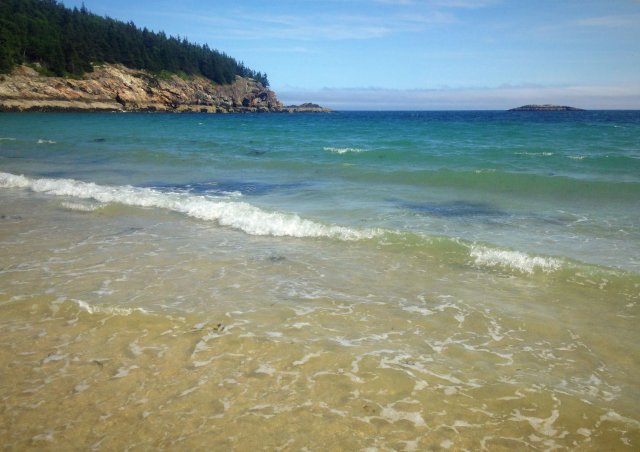Modeling Research Shows How Salty Ocean Air Impacts Ozone Pollution

Published February 23, 2021
Did you know that salty air from the ocean’s surface can help to reduce ozone air pollution, particularly in coastal areas?
Ozone is a harmful pollutant that forms when nitrogen oxides and volatile organic compounds are emitted from motor vehicles, power plants, and industry, and then chemically interact in sunlight. While these man-made sources are the largest contributors to ozone formation, researchers have pointed to the increasingly important role of “background ozone” that results from natural events, such as wildfires or from intercontinental transport of man-made ozone from outside the U.S.
Air quality managers at local, state, and national agencies have asked for air quality models that can delineate the different natural and man-made source contributions to background ozone to help support development of air pollution control strategies. As a result, researchers have looked to the oceans to better understand background ozone.
Several years ago, emerging research indicated that bromine and iodine, two salt-based elements (halogens) emitted from the ocean, could ultimately reduce ozone. These discoveries inspired EPA researchers to investigate whether and how these chemicals could improve ozone modeling. By introducing and assessing halogen chemistry into EPA’s Community Multiscale Air Quality (CMAQ) model over the past decade, researchers have steadily developed a new framework to more accurately predict ozone impacts and dynamics at various geographic scales.
“To represent the amount of ozone that is transported from other continents to the U.S., we need to be able to represent the chemistry in air masses as they traverse these large extents of the ocean,” said Rohit Mathur, EPA researcher and co-author on the studies. “That's what drove us to try and represent that process in CMAQ.”
The latest study, published last year in Atmospheric Environment, found that including bromine and iodine chemistry in the CMAQ Model reduces ozone concentrations in the marine boundary layer where the atmosphere has direct contact with the ocean, and also aloft and inland. They also found that bromine and iodine chemistry reduces annual mean surface ozone over seawater by 25%, with lesser ozone reductions inland.
“This halogen chemistry has higher impacts on coastal areas,” said Golam Sarwar, EPA researcher and lead author on the studies. “So, this chemistry is more important for anyone focusing on air quality in coastal areas.”
With halogen chemistry added to the CMAQ model, researchers now have a new framework that can be updated as new data becomes available from field and laboratory studies to further improve ozone modeling. The researchers are optimistic about the growing halogen chemistry framework but recognize its limitations, dynamic uncertainties, and that more work is needed. Sarwar and Mathur also recognize that climate change will likely impact this halogen chemistry framework.
“This is not my last article on halogen chemistry,” Sarwar shared. “I plan to continue the research to further improve the halogen chemistry and prepare additional articles in the future.”
Read the Atmospheric Chemistry journal article: Influence of bromine and iodine chemistry on annual, seasonal, diurnal, and background ozone: CMAQ simulations over the Northern Hemisphere
Learn more:
- CMAQ: The Community Multiscale Air Quality Modeling System
- CMAQv5.2 Release Notes
- EPA Ozone NAAQS
- EPA Background Ozone Workshop and Associated White Paper
- Background Ozone: Challenges in Science and Policy
Relevant articles The following links exit the site
- Impact of Enhanced Ozone Deposition and Halogen Chemistry on Tropospheric Ozone over the Northern Hemisphere
- The Impact of Iodide-Mediated Ozone Deposition and Halogen Chemistry on Surface Ozone Concentrations Across the Continental United States
- Impact of halogen chemistry on summertime air quality in coastal and continental Europe: application of the CMAQ model and implications for regulation
- Effect of bromine and iodine chemistry on tropospheric ozone over Asia-Pacific using the CMAQ model
